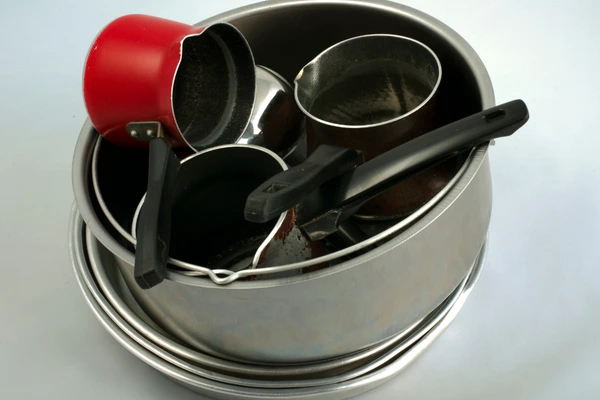So, you’re in the mood for that rich, bold, foam-topped magic in a cup. But there’s just one problem: no cezve or ibrik in sight. Just a regular pot sitting on your stove.
Now you’re wondering, can you make Turkish coffee in a regular pot and still get something close to the real deal?
Yes, you can. While a regular pot won’t give you the exact same control or foam as a cezve, you can absolutely make it work with a little patience and the right technique.
In this guide, I’ll show you exactly how to pull it off, what kind of pot works best, what mistakes to avoid, and how the taste stacks up to the traditional method. Let’s get brewing.
Best Types of Regular Pots to Use (If You Must)
It’s best to use a small stainless steel or copper pot. The key is to use something narrow and tall-ish, not wide and shallow like your average saucepan.
Turkish coffee relies on slow, even heating to build that iconic foam on top. A smaller pot lets the heat rise gradually through the coffee, while a narrow shape helps concentrate the foam instead of spreading it thin. Large or wide-bottomed pots disperse heat too quickly and ruin the foam before it even has a chance.
Also, make sure to avoid non-stick pots. The coating can mess with the texture and flavor, especially at higher temperatures.
Have an induction stove? Check out what kind of pots work the best in this case.
Step-by-Step: How to Make Turkish Coffee in a Regular Pot
Making Turkish coffee in a regular pot isn’t wildly different from the traditional method, but a few small details can make all the difference.
1. Use the right grind
Only use very finely ground Turkish coffee. The texture should feel like powdered sugar. Anything coarser will ruin the mouthfeel.
2. Cold water always
Add cold water to your pot: one small cup (about 80-100 ml) per person.
3. Add coffee and sugar before heating
For each cup of water, use a heaping teaspoon of coffee. If you take sugar, add it now (before heating). Stir gently until fully mixed.
Key Difference: In a regular pot, it’s tempting to stir while heating, but don’t do it. Once the coffee is dissolved, stop stirring to preserve the foam.
4. Use low heat and be patient
Place your pot on low heat. Don’t rush this. The slower the heat, the better the foam.
Key Difference: Regular pots don’t hold or direct heat like a cezve. To avoid burning or sudden boiling, lift the pot briefly if things heat up too fast.
5. Watch for the foam
When the foam starts rising, remove it just before it boils over. Spoon some foam into each cup, return the pot to the heat, and repeat once or twice more.
A regular pot is one of the best cezve alternatives, but there are also other options that could work.
Is It Worth Getting a Cezve Eventually?
Yes, 100% worth it if you plan to make Turkish coffee more than once in a blue moon.
If Turkish coffee becomes part of your routine (or even just your weekend ritual), a cezve pays for itself fast. Your coffee will taste better, look better, and feel more like the real deal.
Final Thoughts – Can You Make Turkish Coffee in a Regular Pot?
So, can you make Turkish coffee in a regular pot? Yes, it’s not ideal, but it’s absolutely doable. With the right grind, a bit of patience, and smart heat control, you can get surprisingly close to the real thing.
Still, if you find yourself hooked on that rich, foamy cup, it might be time to grab a cezve. It’s affordable, easy to use, and honestly, once you try it, you won’t want to go back.

